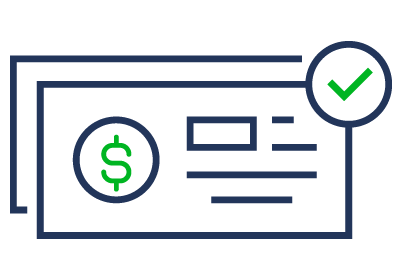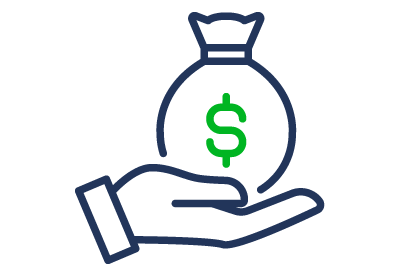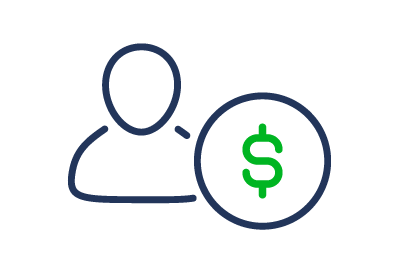What is the CARES Act?
The Coronavirus Aid, Relief and Economic Security (CARES) Act was signed into law on March 27, allocating more than $2 trillion in emergency aid to expand unemployment benefits, set up forgivable loan programs for small businesses, send out one-time stimulus payments to individuals and more. Several of the programs are beneficial to independent contractors and small businesses in the promotional products industry.
Paycheck Protection Program (PPP) Loans*

How long is the program open?
- Lenders began processing applications April 3. In early July, the program deadline was extended to Aug. 8.
Who can apply for a PPP loan?
- Small businesses that meet the SBA’s size standards (fewer than 500 employees).
- Sole proprietors, independent contractors and the self-employed.
How much can I apply for?
- The loans can be for up 2.5 times your average monthly payroll during the year preceding the application.
- Sole proprietors can define “payroll costs” as their net earnings.
- Payroll costs will be capped at $100,000 a year per employee.
- The loans cap out at $10 million.
- Employers have until Dec. 31, 2020 to rehire workers and still have those employees’ salaries counted toward loan forgiveness. (Originally, they only had until June 30.)
- Thanks to the PPPFA, owners will still receive forgiveness even if they don’t rehire employees back to pre-crisis levels, provided they can meet certain conditions, which include demonstrating an inability to return to the same level of business activity that it was operating at prior to Feb. 15, 2020, or showing an inability to hire similarly qualified employees on or before Dec. 31, 2020.
What can the loans be used for?
- Payroll costs over the 24-week period after the loan is made.
- Mortgage interest, rent and utility costs over the same period.
How do I apply?
- Check with your bank for an application.
- Apply with an SBA-approved online lender, like Kabbage.
What do the loans look like and will they be forgiven?
- PPP loans are 100% forgivable, as long as employee and compensation levels are maintained.
- Thanks to the PPPFA, only 60% of the loans must be used for payroll costs to ensure forgiveness.
- The loans now have a 5-year maturity and interest rate of 1%.
- Loan payments will be deferred for six months.
- No collateral or personal guarantees are required.
Where can I find more information?
- U.S. Treasury Fact Sheet
- SBA PPP page
- Find an eligible lender
- Watch this webinar for advice on PPP loans.
Economic Injury Disaster Loan (EIDL) Advances*

Who can apply for an advance?
- Small businesses with fewer than 500 employees.
- Sole proprietors, independent contractors and the self-employed.
Can I apply for a PPP and an EIDL advance?
- You can apply for both, but you can’t double-dip, so your EIDL advance would be subtracted from what you would be eligible for through the PPP.
How do I apply?
- A streamlined application form is available on the SBA site.
Employee Retention Tax Credit

What is the tax credit?
- The credit applies to qualified wages paid after March 12, 2020 and before Jan. 1, 2021.
- The credit is equal to 50% of qualified wages (including health plan expenses) that eligible employers pay their workers during an applicable quarter.
- The maximum credit for an eligible employer for qualified wages paid to any employee is $5,000.
Who is eligible to take the credit?
- Any employer active during 2020 that fully or partially suspended operation because of shutdowns to help stop the spread of COVID-19.
- Employers who experienced a significant decline in revenue.
Can I take the credit and apply for a PPP loan?
- No, you have to choose one or the other.
Where can I find more information?
- Visit the IRS website.
Expanded Unemployment Insurance

What are the expanded benefits?
- The new benefits add an extra $600 a week on top of state benefits for four months. Regular state benefits range from $200 to $550 a week on average.
- The CARES Act extended existing state benefits by 13 weeks.
Who is eligible for benefits?
- The CARES Act extended unemployment insurance to workers who usually aren’t eligible, as long as their unemployment is connected to the pandemic. Part-time employees, freelancers, independent contractors, gig workers and the self-employed could be eligible.
How do I apply?
- Check your state’s unemployment insurance office website for details.
- Find your state’s office here.
*Congress passed an additional round of funding for both the PPP loans and EIDL loans and advances, after the programs had dried up on April 16. On April 27, the SBA said it would resume accepting PPP applications from participating lenders. Due to funding limitations, the SBA is now only accepting EIDL loan and advance applications on a limited basis to provide relief to U.S. agricultural businesses.
